After years of delays, the National Palace Museum yesterday unveiled the final architectural design for its southern branch and the park in which the new facility will be located.
The project, with a budget of more than NT$7.9 billion (US$268 million) and covering an area of about 70 hectares, is expected to be a new cultural and tourist attraction in the Chiayi area, museum officials said.
Two architecture firms chosen to design the museum and the overall landscaping were announced at a press conference yesterday.
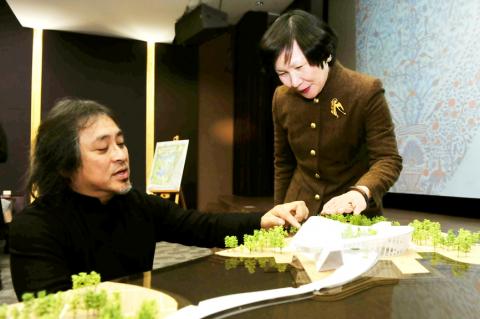
Photo: Chen Yi-chuan, Taipei Times
Inspired by three different calligraphy strokes, architect Kris Yao (姚仁喜) of Taiwan designed the main structure, which consists of black and white curved buildings that meet and intertwine at each end.
A white bridge running between the buildings will allow visitors to walk past the museum without entering, Yao said.
The curves in the design symbolize the three mainstream ancient civilizations of Asia — China, India and Persia, he said, adding the intertwining also signifies the exchanges of the three cultures.
An advanced technique called “base isolation” will be used to protect the buildings from earthquake damage, Yao said.
An area of about 37 hectares has been planned for four Asian-style gardens, including a Japanese one and another featuring orchids, an important plant in southern Taiwan, said Teng Hao, director of the landscaping project.
Approved in 1994 by the Executive Yuan, the project had to surmount various obstacles, such as contract annulments, until the museum commissioned the Construction and Planning Agency to invite public bidders for the construction in 2009.
Typhoon Morakot, which struck southern Taiwan that same year, caused serious flooding at the construction site, dealing the long-delayed project another blow.
After more than two years of efforts, however, the branch is now expected to open in 2015, said Chou Kung-shin (周功鑫), director of the museum.
“It will be a great place to learn about Asian cultures,” she added.
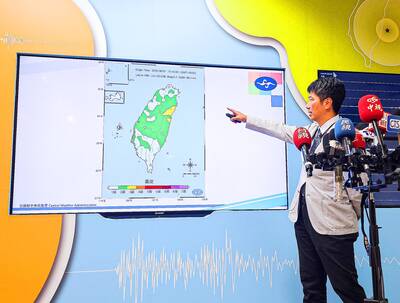
Aftershocks from a magnitude 6.2 earthquake that struck off Yilan County at 3:45pm yesterday could reach a magnitude of 5 to 5.5, the Central Weather Administration (CWA) said. Seismological Center technical officer Chiu Chun-ta (邱俊達) told a news conference that the epicenter of the temblor was more than 100km from Taiwan. Although predicted to measure between magnitude 5 and 5.5, the aftershocks would reach an intensity of 1 on Taiwan’s 7-tier scale, which gauges the actual effect of an earthquake, he said. The earthquake lasted longer in Taipei because the city is in a basin, he said. The quake’s epicenter was about 128.9km east-southeast
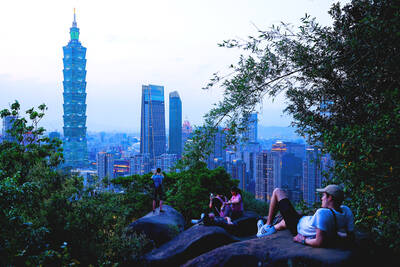
GENSLER SURVEY: ‘Economic infrastructure is not enough. A city needs to inspire pride, offer moments of joy and foster a sense of belonging,’ the company said Taipei was named the city with the “highest staying power” in the world by US-based design and architecture firm Gensler. The Taiwanese capital earned the top spot among 65 cities across six continents with 64 percent of Taipei respondents in a survey of 33,000 people saying they wanted to stay in the city. Rounding out the top five were Vietnam’s Ho Chi Minh City (61 percent), Singapore (59 percent), Sydney (58 percent) and Berlin (51 percent). Sixth to 10th place went to Monterrey, Mexico; Munich, Germany; Sao Paulo, Brazil; Vancouver; and Seoul. Cities in the US were ranked separately, with Minneapolis first at
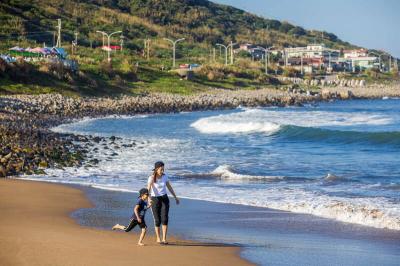
The New Taipei City Government today warned about the often-overlooked dangers of playing in water, and recommended safe swimming destinations to cool off from the summer heat. The following locations in the city as safe and fun for those looking to enjoy the water: Chienshuiwan (淺水灣), Baishawan (白沙灣), Jhongjiao Bay (中角灣), Fulong Beach Resort (福隆海水浴場) and Sansia District’s (三峽) Dabao River (大豹溪), New Taipei City Tourism and Travel Department Director-General Yang Tsung-min (楊宗珉) said. Outdoor bodies of water have variables outside of human control, such as changing currents, differing elevations and environmental hazards, all of which can lead to accidents, Yang said. Sudden
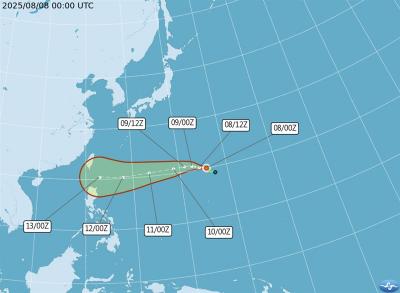
Tropical Storm Podul has formed over waters north-northeast of Guam and is expected to approach the seas southeast of Taiwan next week, the Central Weather Administration (CWA) said today. The 11th Pacific storm of the year developed at 2am over waters about 2,660km east of Oluanpi (歐鑾鼻), Pingtung County — Taiwan's southernmost tip. It is projected to move westward and could have its most significant impact on Taiwan on Wednesday and Thursday next week, the CWA said. The agency did not rule out the possibility of issuing a sea warning at that time. According to the CWA's latest update, Podul is drifting west-northwest